TOKYO
THE CITY THAT NEVER SLEEPS
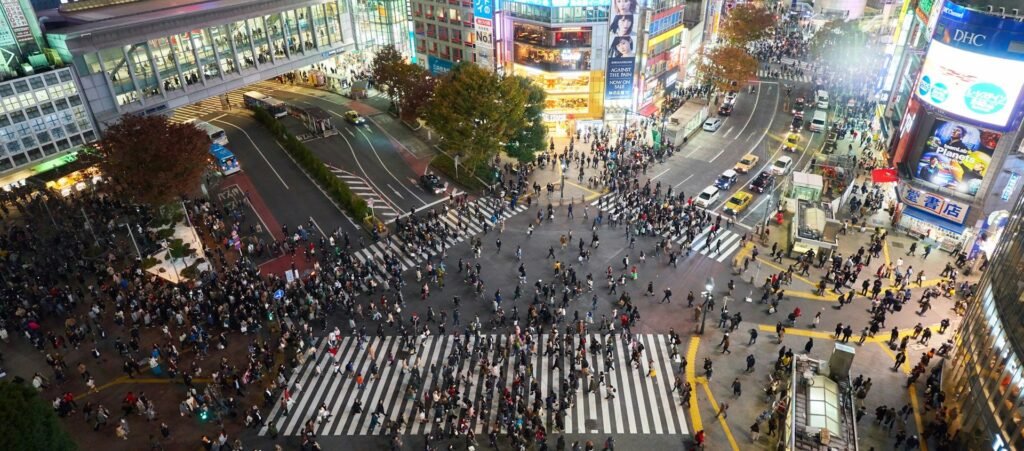
It helps keep this site running, and we appreciate your support!
Tokyo Icons: Skyscrapers, Streets, and Sacred Sites
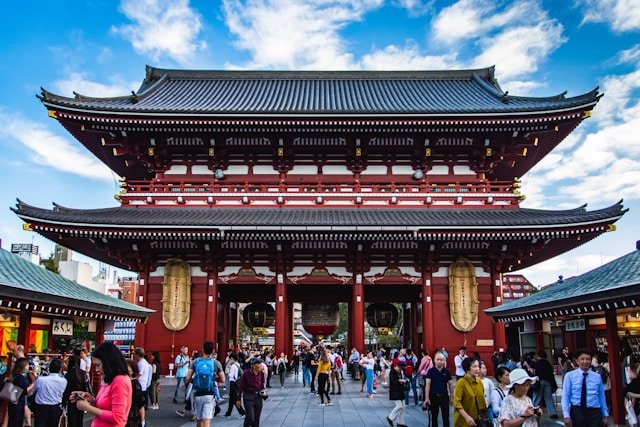
Senso-ji (Asakusa Temple)
Tokyo’s oldest temple, Senso-ji, welcomes you with the thunderous red Kaminarimon gate, its giant lantern swaying above a street alive with history. The Nakamise-dori stretches ahead, a bustling lane of wooden stalls hawking traditional snacks like ningyo-yaki and crafts like folding fans, leading to the temple’s serene main hall and its striking five-story pagoda. Founded in 645 AD, it’s steeped in legend—a statue of Kannon fished from the Sumida River—and offers a timeless glimpse of Buddhist ritual amid incense and prayers. It’s a cultural heart where Tokyo’s past thrives, perfect for soaking in tradition amid the city’s modernity.
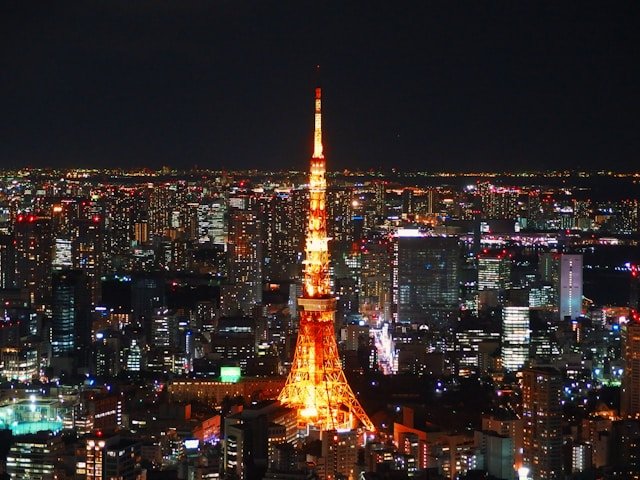
Tokyo Tower
Rising 333 meters over the city, Tokyo Tower stands as Japan’s iconic nod to mid-century ambition, its vibrant orange-and-white steel frame a beloved landmark since 1958. From its main deck at 150 meters and top deck at 250 meters, you’ll catch sweeping views of Tokyo’s skyline—think shimmering bays, distant mountains, and a neon glow after dark. Below, the tower’s FootTown buzzes with shops, eateries, and quirky exhibits, mixing retro charm with modern fun. It’s a must-see for its nostalgic allure and lively base, perfect for grabbing a bite or a trinket after soaking in the panoramic heights.
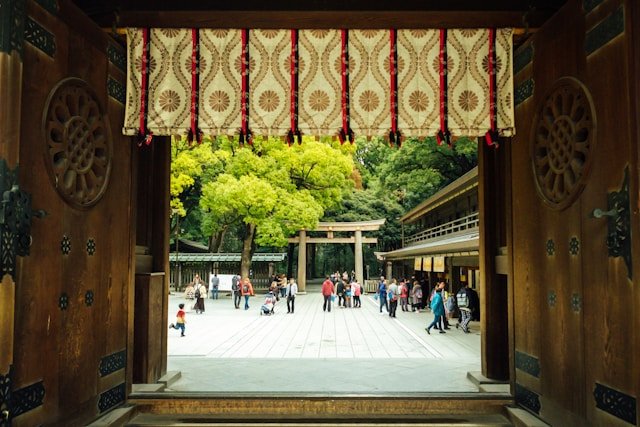
Meiji Shrine
Tucked within a 170-acre forest of 100,000 trees, Meiji Shrine is a tranquil oasis dedicated to Emperor Meiji and Empress Shoken, whose reign ushered Japan into the modern era. A towering torii gate marks the entrance, guiding you along a gravel path where the city’s hum fades into birdsong and rustling leaves. The shrine’s wooden architecture, with its elegant simplicity, invites quiet reflection, while the surrounding Yoyogi Park blooms with irises in summer and sakura in spring. It’s a soulful escape, offering peace and a connection to Shinto spirituality right in Tokyo’s beating heart.
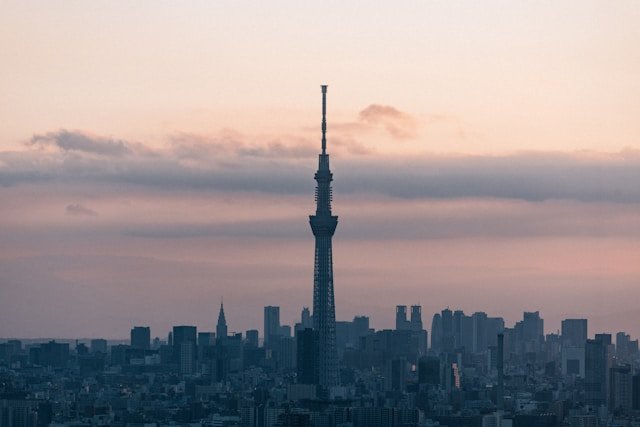
Tokyo Skytree
Soaring 634 meters above the city, Tokyo Skytree is Japan’s tallest structure, a sleek steel beacon offering jaw-dropping views from its observation decks at 350 and 450 meters. On clear days, Mount Fuji graces the horizon, while the sprawling urban tapestry of Tokyo unfurls below, glittering especially at night. Beyond the height, the surrounding Skytree Town adds charm with Solamachi, a sprawling complex of shops, restaurants, and an aquarium, blending modern flair with a nod to Edo-era aesthetics. It’s a must-visit for the sheer thrill of altitude and the vibrant energy of its bustling base, where you can sip matcha or shop for souvenirs after descending.

Shibuya Crossing
Shibuya Crossing is Tokyo’s pulsing epicenter, a chaotic ballet of humanity where hundreds crisscross beneath neon billboards and towering screens, especially mesmerizing after dark. Flanked by Shibuya Station, one of the world’s busiest hubs, it’s a sensory overload of lights, sounds, and motion—think “Lost in Translation” brought to life. Nearby, the Hachiko Statue stands as a quiet tribute to loyalty, the Akita dog’s story drawing crowds to snap photos. It’s a must-see for its raw, electric energy, a snapshot of urban Japan that captures the city’s relentless rhythm and heartfelt quirks.
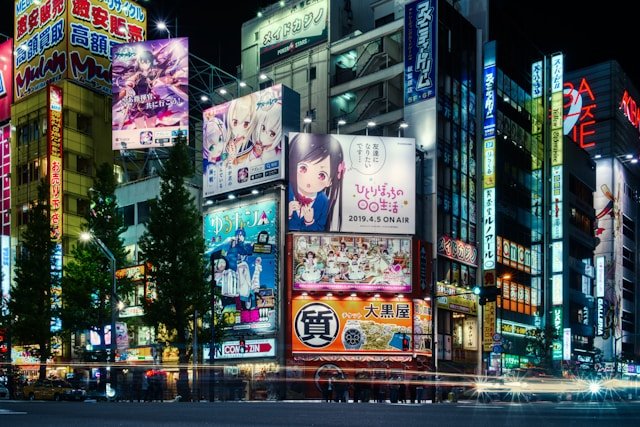
Akihabara
Akihabara, dubbed “Electric Town,” buzzes as Tokyo’s otaku mecca, a neon-lit wonderland of multi-story electronics emporiums, anime figurine shops, and manga bookstores. The streets thrum with arcade sounds and cosplay sightings, while maid cafes beckon with quirky charm—maids in frilly dresses serving tea with a smile. From retro Game Boys to cutting-edge gadgets, it’s a tech-lover’s paradise, with Yodobashi Camera’s massive flagship drawing crowds. It’s a vibrant plunge into Japan’s pop culture obsession, where every corner pulses with creativity and nostalgia.
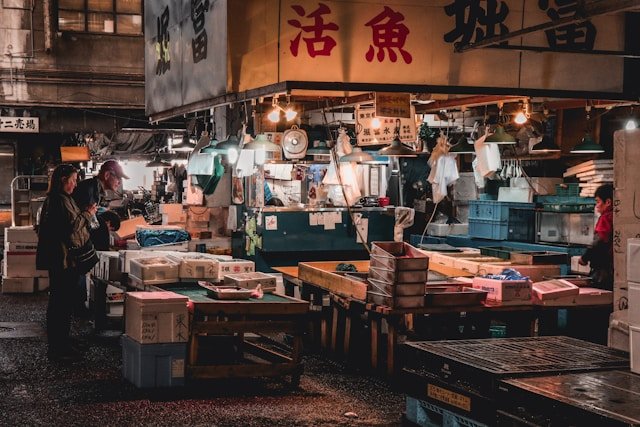
Tsukiji Fish Market
Though the famous tuna auctions relocated to Toyosu in 2018, Tsukiji’s outer market remains a thriving labyrinth of seafood stalls, sushi counters, and knife shops that pulse with culinary life. The air hums with vendors hawking fresh wasabi, steaming tamagoyaki, and sashimi so pristine it melts on your tongue—perfect for food lovers craving an authentic taste of Japan. Narrow alleys reveal hidden eateries where locals and tourists alike savor uni and toro, while the market’s gritty charm nods to its decades as Tokyo’s fish-trading soul. It’s a delicious dive into the city’s gastronomic heritage, just steps from Ginza’s polish.
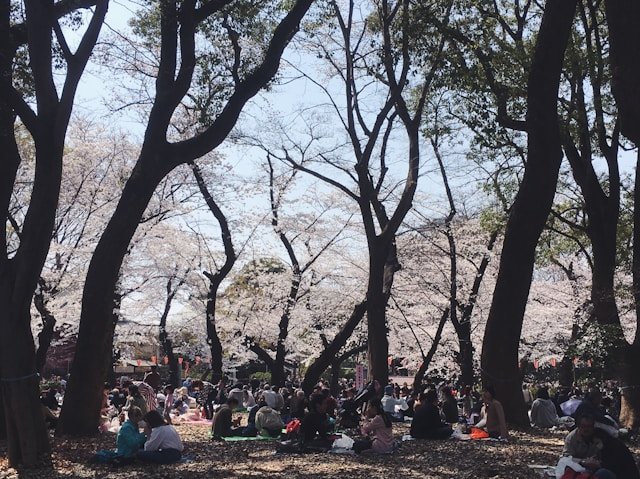
Ueno Park
Sprawling across central Tokyo, Ueno Park is a cultural treasure chest, its tree-lined paths weaving past the Tokyo National Museum’s ancient artifacts, the Ueno Zoo’s beloved pandas, and serene Shinobazu Pond dotted with lotus. Spring transforms it into a cherry blossom wonderland, drawing hanami picnickers, while the Toshogu Shrine’s golden lanterns add historic gravitas. Museums like the National Museum of Nature and Science offer deep dives into art and science, making it a feast for curious minds. It’s a lush, living hub where nature and culture collide, perfect for a day of discovery.
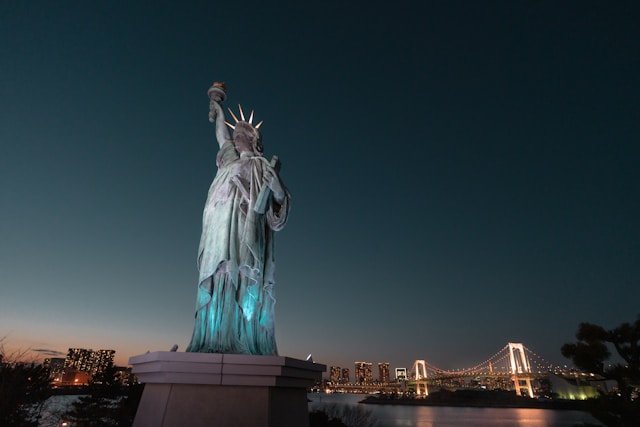
Odaiba
Odaiba, an artificial island in Tokyo Bay, feels like a futuristic playground, reached by the rainbow-hued Rainbow Bridge or a scenic monorail ride. TeamLab Borderless dazzles with immersive digital art—light and color dancing around you—while the life-sized moving Unicorn Gundam statue awes anime fans. Oedo Onsen Monogatari offers a hot spring escape with yukata-clad relaxation, and the waterfront at Palette Town boasts views of Tokyo’s skyline. It’s a dazzling blend of innovation and leisure, where every attraction feels like a peek into tomorrow’s Tokyo.
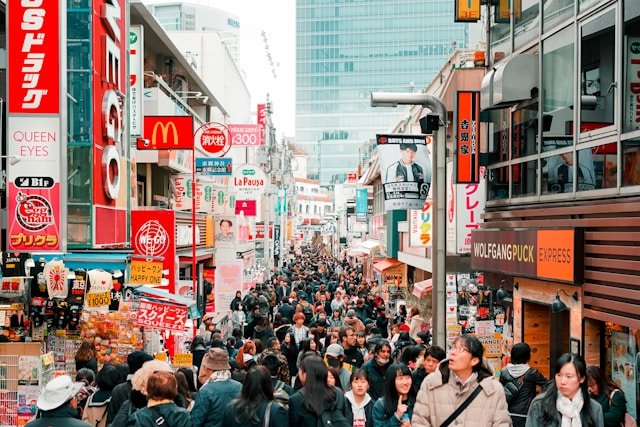
Harajuku
Harajuku pulses with youthful exuberance along Takeshita Street, a narrow alley bursting with kawaii fashion boutiques, crepe stands, and rainbow-colored snacks that draw trendsetters and tourists alike. Beyond the chaos, Yoyogi Park unfolds as a green haven, especially lively on Sundays with rockabilly dancers and street performers near the Meiji Shrine’s sacred calm. The neighborhood’s duality—wild creativity meets quiet tradition—shines through in Laforet’s avant-garde shops and Omotesando’s chic boulevards. It’s a cultural crossroads where Tokyo’s playful spirit and heritage dance together.
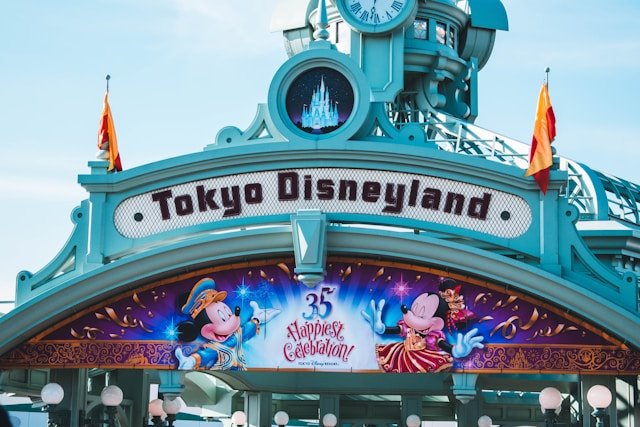
Tokyo Disneyland / Tokyo DisneySea
Though technically in Chiba Prefecture, a short train ride from Tokyo, these parks are magical kingdoms worth the trip. Disneyland enchants with Cinderella’s Castle and classic rides like Space Mountain, steeped in Disney nostalgia. DisneySea, unique to Japan, captivates with its nautical theme—Mount Prometheus looms over ports of call, from Mediterranean harbors to Arabian coasts, with thrilling rides like Journey to the Center of the Earth. Both burst with parades, fireworks, and meticulous detail, making them a joyful escape where imagination reigns supreme for kids and adults alike.
Tokyo Vibes: Culture, Crafts, and Nightlife
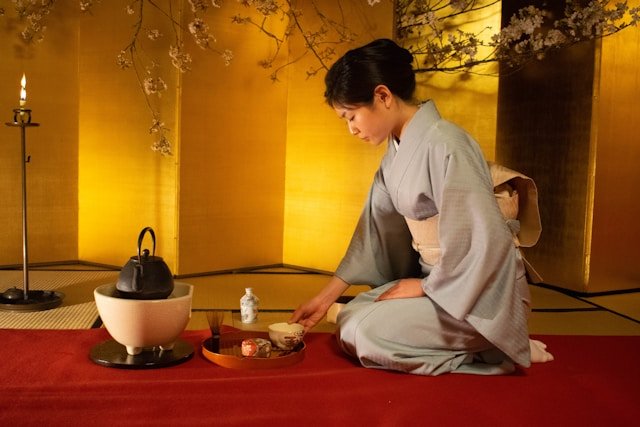
Tea Ceremony in a Traditional Teahouse
Sipping matcha in a tatami-lined teahouse transports you to the heart of Japanese serenity, where every gesture in a tea ceremony—cha-no-yu—is a meditative art form. In districts like Ginza or Kagurazaka, masters in kimonos whisk vibrant green tea with bamboo, serving it alongside delicate wagashi sweets, all while sharing the philosophy of harmony and respect. The quiet rustle of silk and the bitter-sweet taste linger long after, offering a soulful pause in Tokyo’s frenzy. It’s a hands-on way to connect with centuries-old elegance, perfect for unwinding and reflecting.
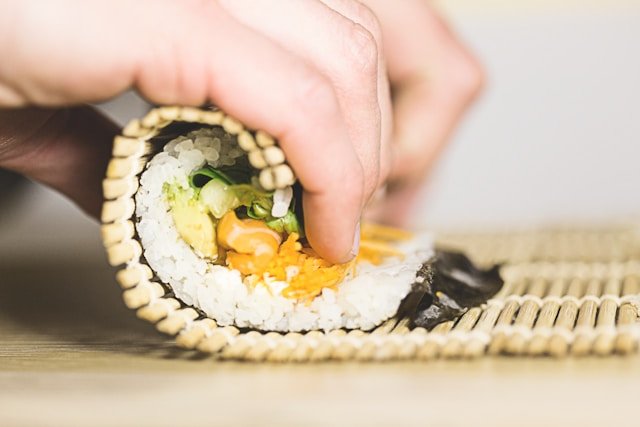
Cooking Class: Sushi or Ramen Making
Rolling your own sushi or stirring a steaming pot of ramen under a chef’s guidance turns Tokyo’s culinary magic into a personal adventure. In small kitchens across Shibuya or Asakusa, you’ll learn to shape nigiri with fresh fish or craft the perfect broth from scratch, tasting the fruits of your labor at the end. The instructors—often warm and patient—share tricks of the trade, from rice seasoning to noodle texture, demystifying Japan’s food culture. It’s a delicious, interactive way to bring a piece of Tokyo home, blending fun with flavor.
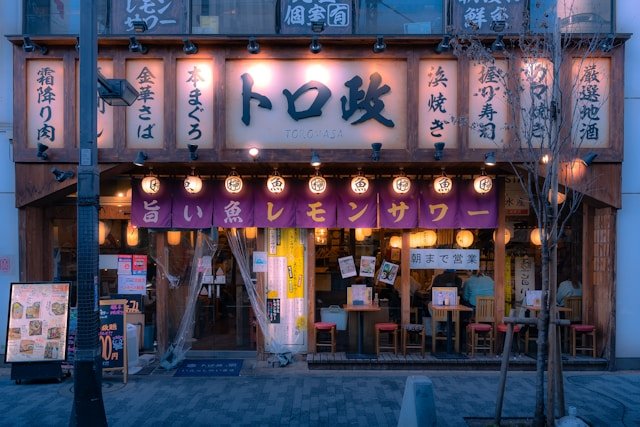
Street Food Tour in Dotonbori-style Yurakucho
Wandering Yurakucho’s narrow alleys under the Yamanote Line tracks feels like stepping into a smoky, savory time warp, where yakitori skewers sizzle and sake flows in tiny izakayas. This gritty pocket of Tokyo echoes Osaka’s Dotonbori vibe, with vendors grilling octopus balls, pouring frothy beers, and chatting with regulars. A guided tour weaves you through the best stalls, pairing bites like kushikatsu with stories of the area’s post-war roots. It’s a tasty, laid-back way to taste Tokyo’s working-class heart, far from polished dining rooms.
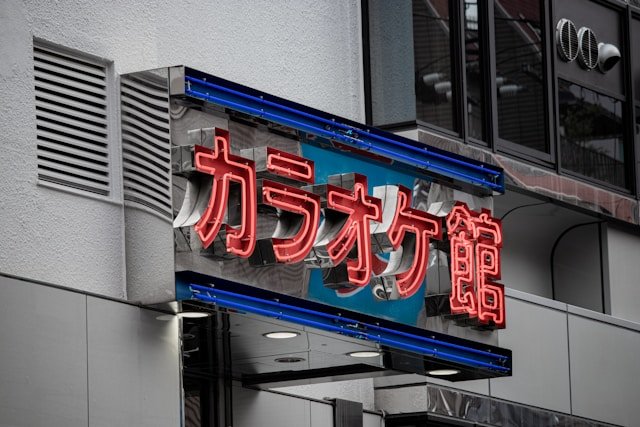
Karaoke in a Private Booth
Belting out tunes in a private karaoke booth is a Tokyo rite of passage, where neon-lit parlors like Karaoke Kan in Shibuya offer rooms stocked with thousands of songs in English and Japanese. With a mic in hand and drinks on the table, you can croon pop hits or J-rock anthems, the soundproof walls letting you unleash without judgment. The vibe is pure fun—friends cheering, screens flashing lyrics—turning a night into a personal concert. It’s a joyful slice of modern Japanese nightlife, perfect for letting loose and laughing with your crew.
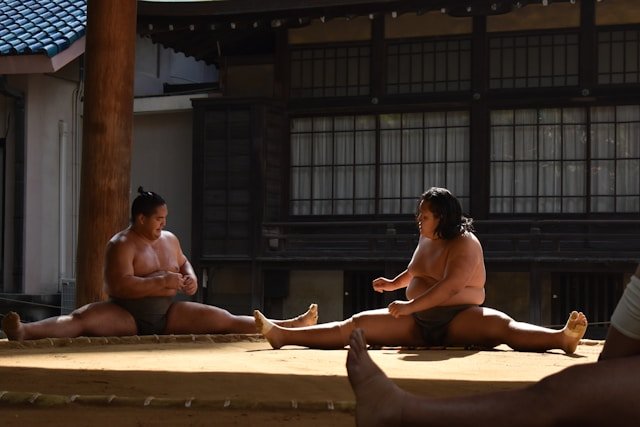
Sumo Morning Practice at a Stable
Stepping into a sumo stable offers a rare glimpse into Japan’s ancient sport, where you can watch wrestlers train in the early hours, their massive frames colliding in a ritual of strength and discipline. Hidden in neighborhoods like Ryogoku, these sessions reveal the grueling dedication behind the pageantry—grunts echo as they stomp the clay ring, refining moves passed down centuries. You’ll need to book through a tour or contact a stable in advance, but the intimate setting, often with a guide explaining customs, makes it unforgettable. It’s a raw, authentic peek into a living tradition, far from the tourist crowds.
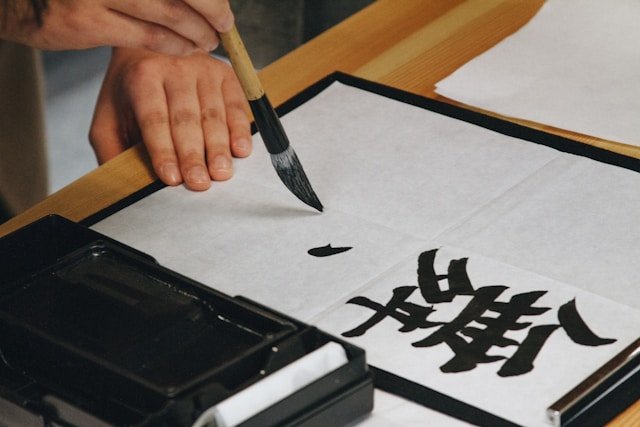
Calligraphy Workshop (Shodo)
Dipping a brush into ink and sweeping it across rice paper in a shodo class unlocks Japan’s art of beautiful writing, a practice rooted in Zen focus. In studios around Ueno or Shinjuku, a teacher guides your hand to form kanji characters, each stroke a balance of strength and grace, often leaving you with a personalized keepsake. The quiet scratch of bristles and the scent of ink create a meditative calm, blending creativity with cultural depth. It’s a serene, hands-on way to craft something uniquely yours while tapping into Tokyo’s artistic heritage.
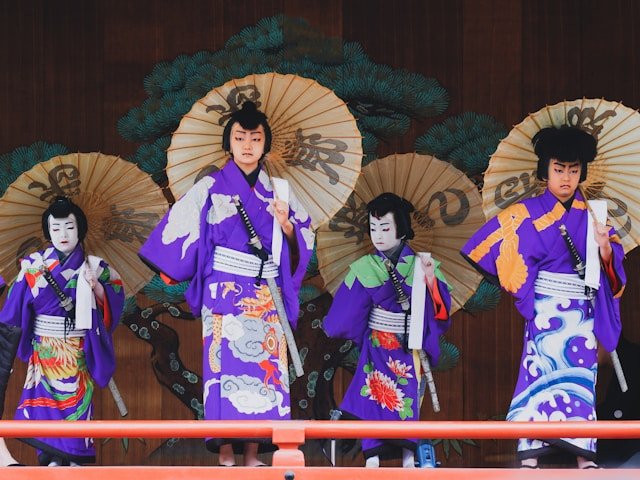
Kabuki Theater Performance
A night at a kabuki show plunges you into a whirlwind of drama, where actors in elaborate makeup and costumes strut across the stage, their exaggerated poses and chants telling tales of samurai and spirits. At venues like Kabukiza in Ginza, the centuries-old art form dazzles with vibrant costumes, live shamisen music, and sudden trapdoor surprises. Even with single-act tickets, the spectacle—think men playing women in falsetto—captivates, with English earphone guides unraveling the plot. It’s a bold, theatrical dive into Japan’s storytelling soul, alive with color and emotion.
Flights
Hotels
Dining

Sushi: Fresh Bites from the Source
Tokyo is sushi central, home to the world-famous Tsukiji Market (now Toyosu), where fish is auctioned fresh daily. Whether you’re at a high-end spot like Sushi Saito or a conveyor-belt joint in Shibuya, you’ll taste melt-in-your-mouth tuna, silky sea urchin, and perfectly seasoned rice. Go for nigiri—a simple combo of fish and rice—to savor the purity of flavors Tokyoites obsess over. Early mornings at Toyosu’s sushi counters offer the freshest catch, often paired with miso soup for a classic start to the day.
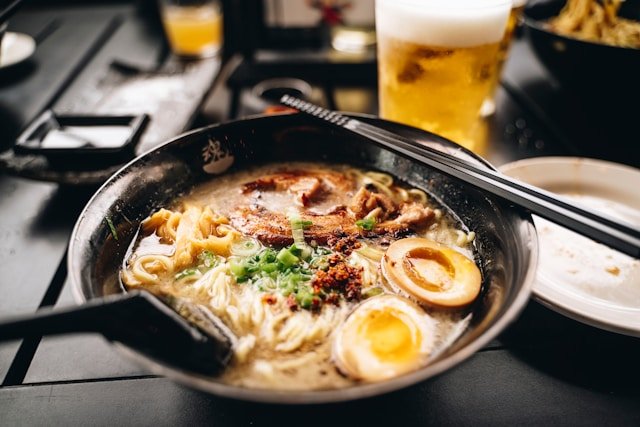
Ramen: Soul-Warming Noodles
Ramen in Tokyo is an art form, with endless styles to slurp. Try shoyu (soy sauce-based) for a rich, savory kick or tonkotsu (pork bone broth) for a creamy, hearty bowl—Ichiran in Shinjuku nails the latter. Topped with springy noodles, tender chashu pork, and a jammy egg, it’s comfort food dialed to eleven. Locals queue at hole-in-the-wall spots like Ramen Jiro for massive, garlicky portions—bring your stretchy pants and a love for bold flavors.
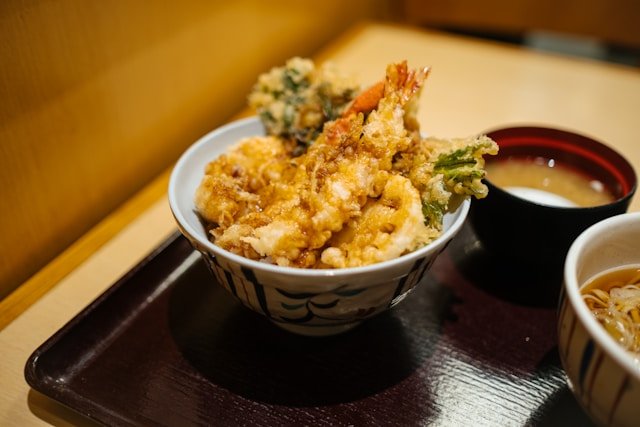
Tempura: Crispy Perfection
Tempura turns veggies and seafood into golden, crunchy delights. In Tokyo, spots like Tempura Kondo in Ginza fry up prawns, eggplant, and lotus root in a light, airy batter that’s never greasy. Served with a dipping sauce of tentsuyu (soy, mirin, and dashi) or just a sprinkle of salt, it’s a lesson in simplicity done right. Pair it with rice and miso for a tendon bowl—a local favorite that balances crisp and hearty.

Yakitori: Grilled Skewers with Swagger
Yakitori is Tokyo’s answer to late-night cravings—juicy chicken skewers grilled over charcoal, kissed with smoky char. From negima (chicken thigh with leek) to tsukune (minced chicken meatballs), you’ll find these at izakayas like Torikizoku in Ikebukuro. Brushed with tare (sweet soy sauce) or sprinkled with salt, they’re best with a cold beer. Street stalls near Shinjuku’s Omoide Yokocho serve them cheap and fast—perfect after a night out.
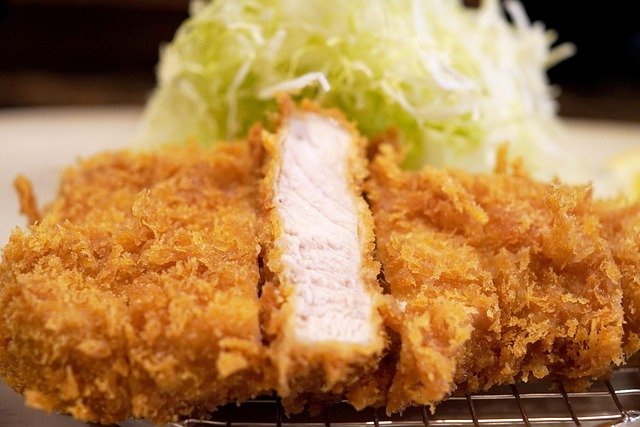
Tonkatsu: Pork Cutlet Perfection
Tonkatsu is a crispy pork cutlet that’s pure comfort on a plate. At places like Tonki in Meguro, they pound the pork tender, coat it in panko, and fry it to golden perfection. Served with shredded cabbage, tangy sauce, and a bowl of rice, it’s a hearty staple. Opt for rosu (fattier loin) or hire (lean fillet)—either way, you’re in for a crunchy, juicy bite that’s a Tokyo classic.
Japan Travel Essentials: Language, Money, and Manners
Tipping: Keep Your Change
Eating: Slurp with Pride
Convenience Stores: Your 24/7 Lifeline
Getting Around Tokyo: Trains, Apps, Feet, and Taxis
Taxis: Pricey but Practical
Tokyo Through the Seasons: When to Go
Autumn: Foliage and Calm
Value Index
Tokyo can be expensive, particularly in terms of accommodation and dining in upscale areas, yet it offers numerous opportunities for budget-conscious travelers. The city’s public transportation is both efficient and affordable, with various discount passes available. Food, from street snacks at convenience stores to budget ramen shops, can be very reasonably priced, providing excellent quality for the cost. Moreover, many cultural attractions and parks are either free or have nominal entry fees.
The current weak yen situation also adds to the value, making Japan a more affordable destination for international visitors. However, costs can add up quickly with luxury dining, high-end shopping, and staying in central areas, which slightly lowers the overall value index.
